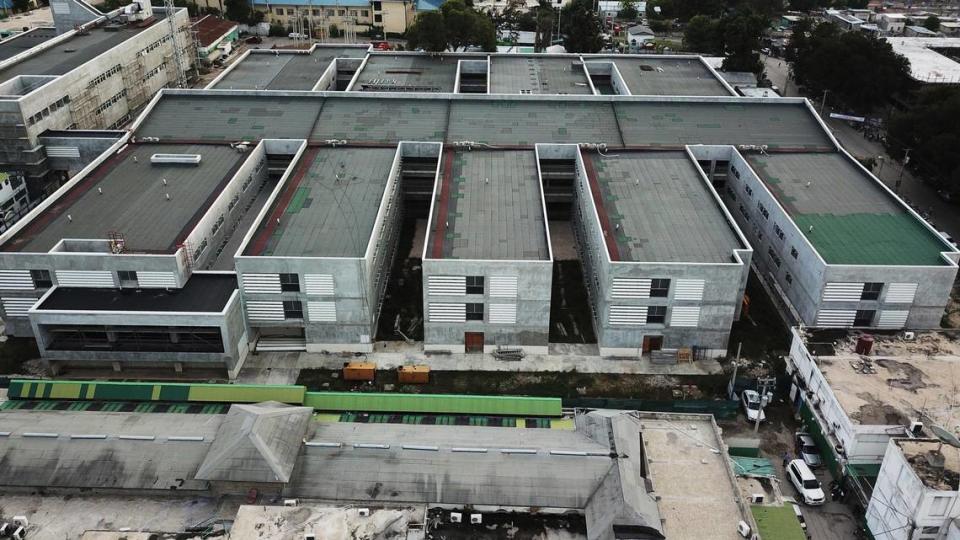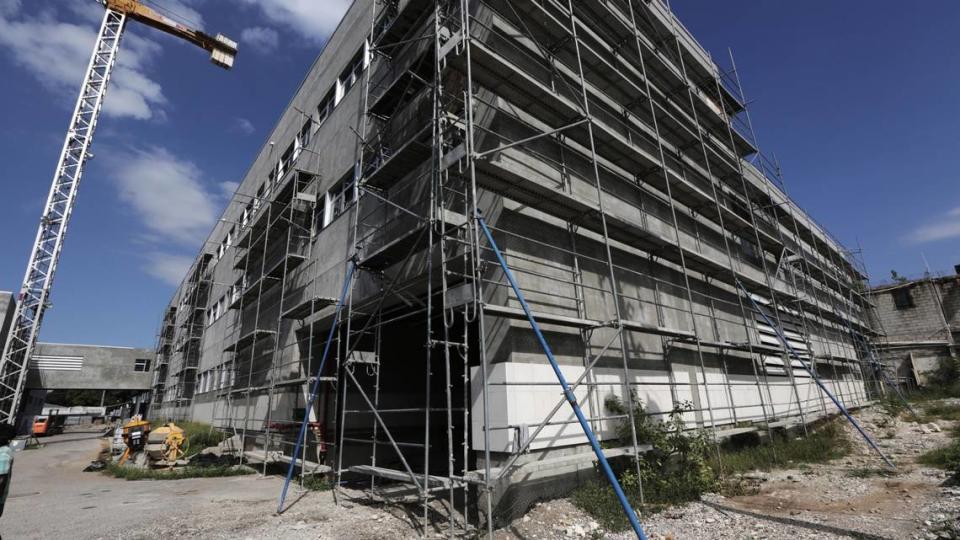The U.S. allocated millions to help Haiti rebuild after 2010 earthquake. How was it spent?
The United States Government Accountability Office has issued a report on U.S. efforts to help Haiti rebuild after its devastating 2010 earthquake, and the conclusions are the same as in previous findings: Canceled projects, reduced allocations and cost overruns and delays.
This includes the ongoing construction of the new State University Hospital, also known as the General Hospital in Port-au-Prince, whose completion is now anticipated for June 2024 — 10 years later than planned and nearly $29 million over the initial budget agreed to by the U.S, France and Haiti, all three of which are jointly financing the project.
“According to USAID, technical issues and political issues have resulted in significant delays and cost overruns,” the GAO said in its report, referring to the U.S. Agency for International Development.
Issued Thursday, the latest GAO report on Haiti’s reconstruction reviewed 29 infrastructure and development projects by USAID in Haiti since the 2010 earthquake, and USAID’s efforts to help build the capacity of local Haitian organizations to implement the projects. Auditors also reviewed the State Department’s Bureau of International Narcotics and Law Enforcement Affairs activities to develop the Haitian National Police over the same period.
Auditors found “mixed results” in the police rebuilding efforts, and highlighted several concerns including the lack of drug interdiction by the country’s counter-narcotics police officers, who received U.S. funding and training. Efforts by the U.S. and others in the international community to rebuild the police force have come under heavy scrutiny in light of Haiti’s ongoing gang violence.

Jake Johnston, who followed Haiti’s reconstruction closely in the Haiti: Relief and Reconstruction Watch blog as a lead researcher at the Center for Economic and Policy Research, said he isn’t surprised by the GAO’s latest findings.
“The real legacy of U.S. efforts during the reconstruction period is what’s currently taking place in Haiti. You can look at any project, but the result is the situation on the ground today,” he said. “It was about more than just individual aid projects. It was supposed to be about ‘Building back letter,’ and lessons learned.“
In its report, the GAO found that the effects of the earthquake exacerbated Haiti’s humanitarian needs, which have only increased over the years with the ongoing political turmoil, gang violence and social unrest.
While the GAO says the earthquake is estimated to have caused more than 2,200 deaths and 12,200 injuries, and damaged or destroyed approximately 130,000 homes, the Haitian government, which logged the number of bodies its workers transported in trucks to mass graves, put the death toll at 316,000.
Auditors found that while some projects like a power plant in Caracol in northern Haiti were completed and came in under budget, other projects have been delayed for years and were canceled because costs were higher than initially anticipated. This includes a new port in the northern city of Cap-Haïtien, which was canceled after a $4 million feasibility study projected it would cost between $109 million and $183 million — far exceeding the intended budget of $67.5 million; and an expansion of the 10 megawatt $74 million Caracol Power Plant to 25 megawatts.
Also canceled was a planned $108 million project to increase farmers’ access to local markets in three major cities — Cap-Haïtien, St. Marc and Port-au-Prince — after the budget was reduced by $80 million, and USAID was unsuccessful in reducing the scope of the project to satisfy the new budget.
“Most of the infrastructure activities that we reviewed did not achieve planned results — scopes, costs, and time frames — as outlined in USAID/Haiti’s 2011 planning documents,” the report found.

One long-term area of concern was housing and the construction of homes to help the estimated 2.3 million Haitians who were displaced by the disaster. USAID’s housing construction program was rife with problems, from issues with the contractors to shoddy workmanship to cost overruns. The homes, the GAO found, not only cost 13% more to complete but went four years past the deadline. The number of homes to be built was also drastically reduced.
“USAID/Haiti also reduced the scope of the activity because it found that the actual costs to build each house and prepare each plot substantially exceeded planned costs,” the report said. “Specifically, USAID/Haiti reduced the number of homes it built from 4,000 to 906 and the plots it prepared from 15,000 to 1,865, according to officials.”
Meanwhile, more than 80% of the homes required emergency repair work due to shoddy construction. Deficiencies included leaking roofs, substandard foundations and wall construction, drainage issues, and improperly installed and substandard sewer and water pipes. The GAO report said that USAID had reached a legal settlement with the original construction contractor to reimburse the U.S. government $86,000 for the deficiencies. As of October 2022, the contractor, who is making monthly installments, had reimbursed $24,000 of the total settlement amount.
The GAO said that back in 2011, when many of the projects were envisioned, they were ambitious and in some cases “unrealistic.”
A similar conclusion was reached in 2015 when a similar report was issued after the GAO reviewed 23 reconstruction projects and found that while some in health and agriculture did well, construction projects continue to suffer from cost overruns and delays. In three cases USAID’s Haiti mission was forced to cancel projects because of poor performance or insufficient Haitian government support, auditors said.
“Challenges such as overly ambitious plans, inadequate mission staffing, and slow or revised decisions from the Haitian government have led to delays and lower than expected results for most activities,” International Affairs and Trade Director David Gootnick wrote at the time.
‘Really dire’
On Friday, Tareq Talahma, the acting director of operations and advocacy division in the United Nations Office for the Coordination of Humanitarian Affairs, told reporters at a press briefing on Haiti that the humanitarian situation in the country “is really dire” and “the real story on the ground is worse than what we thought.”
He noted that just one week before his delegation’s arrival in Haiti for a two-day visit this week, 136 people were killed in three days.
“Comparing the situation and how much it has deteriorated in Haiti is a big concern,” said Talahama, who was part of the delegation to examine how humanitarian aid groups are faring in helping the country’s 12 million residents despite the ongoing violence and kidnappings. “We have 5.2 million people who are in need of humanitarian assistance.
“Almost half of the population is facing food insecurity but also 5% of the children in the country are really in a severe malnutrition situation,” he added. “The people which we talked to actually said ‘They are not living.’ We are surviving.’ ”
Talahama said while there are a lot of competing needs in the country there are three priorities: Haitians need access to protection, to basic services and humanitarian workers need security to provide services.
“The gangs ...are really occupying schools and hospitals. They are waiting for kids outside of the schools to kidnap them,” he said.

